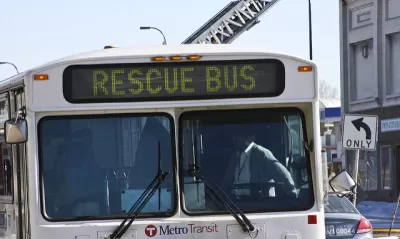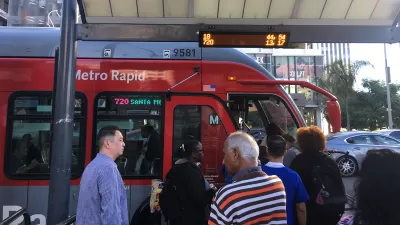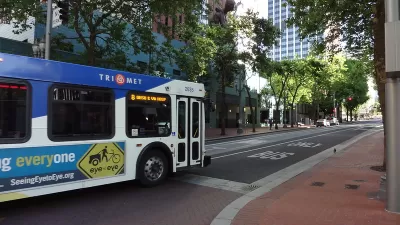While transit systems around the country had reason to celebrate the new funding made available in the federal infrastructure bill, long-term concerns about operational capacity have not been resolved.

"[The Detroit Department of Transportation] is making changes to routes across the city this week in an effort to improve service and reduce bus stop wait times," reports Eric D. Lawrence for Detroit Free Press.
C. Mikel Oglesby, Detroit's executive director of transit, is quoted in the article saying that the new schedules more accurately reflect the service currently provided, as the system "grapples with low ridership and a bus driver shortage." To minimize the inconvenience to riders, DDOT is targeting service reductions on low-ridership routes.
" [Oglesby] said DDOT is short about 90 drivers and ridership is down about 50%, from about 70,000 per day to 30,000-35,000 per day," reports Lawrence.
Bus driver shortages pre-date the pandemic—cities like St. Louis, Denver, and Minneapolis made news for cutting trips due to driver shortages in 2019, for example—but the problem has been perpetuated by the pandemic. MARTA also recently cut bus service in the Atlanta region, also citing bus driver shortages as the reason for the cutbacks.
In some respects, public transit seems to be prospering through the pandemic: Stimulus funding prevented the existential crises of Spring 2020, record amounts of new funding has been made available by the recently approved Infrastructure Investment and Jobs Act (IIJA), and a growing number of transit systems lowering or eliminating fares.
Despite those reasons for optimism, transit systems are still hanging by a thread (as reported on this site earlier in 2021): Ridership has been slow to return to most U.S. transit systems, the aforementioned driver shortages persist, and the IIJA also provided a record amount of funding for automobile infrastructure.
Most significantly to the future of public transit systems like the DDOT's, the structural deficit of transit funding for public transit operations in this country has not been resolved.
FULL STORY: DDOT to make route changes after low ridership, bus driver shortage

Planetizen Federal Action Tracker
A weekly monitor of how Trump’s orders and actions are impacting planners and planning in America.

Congressman Proposes Bill to Rename DC Metro “Trump Train”
The Make Autorail Great Again Act would withhold federal funding to the system until the Washington Metropolitan Area Transit Authority (WMATA), rebrands as the Washington Metropolitan Authority for Greater Access (WMAGA).

DARTSpace Platform Streamlines Dallas TOD Application Process
The Dallas transit agency hopes a shorter permitting timeline will boost transit-oriented development around rail stations.

Supreme Court Ruling in Pipeline Case Guts Federal Environmental Law
The decision limits the scope of a federal law that mandates extensive environmental impact reviews of energy, infrastructure, and transportation projects.

Texas State Bills to Defund Dallas Transit Die
DART would have seen a 30% service cut, $230M annual losses had the bills survived.

Bikeshare for the Win: Team Pedals to London Cricket Match, Beats Rivals Stuck in Traffic
While their opponents sat in gridlock, England's national cricket team hopped Lime bikes, riding to a 3-0 victory.
Urban Design for Planners 1: Software Tools
This six-course series explores essential urban design concepts using open source software and equips planners with the tools they need to participate fully in the urban design process.
Planning for Universal Design
Learn the tools for implementing Universal Design in planning regulations.
Roanoke Valley-Alleghany Regional Commission
City of Mt Shasta
City of Camden Redevelopment Agency
City of Astoria
Transportation Research & Education Center (TREC) at Portland State University
US High Speed Rail Association
City of Camden Redevelopment Agency
Municipality of Princeton (NJ)




























